Dug up a neat AT&T 286 - Take a look!
Wow, haven't been here in over 10 years. Hope everyone is doing well!
So I haven't touched my 12th Edition of Scott Mueller's Upgrading and Repairing PC's in close to 5 years. But here it is, back on my desk...
The reason? Well I dug up an AT&T Model 6286/EL WGS Desktop
I pulled the cover, it's stamped September 1990 on the bottom. Massive amounts of dust! Massive! Both 6-pin power connectors were unplugged. One SIMM removed and laying in the case.
Plugged in the connectors, I thought I was slick remembering the "black wires touching" rule, but alas, they're keyed... Pushed in the line voltage power switch, PSU fan comes alive, front panel power LED lights green, and the floppy drive has some activity. POST beep.
My next task was giving every inch of the computer a dusting and cleaning. Here's the drive bay/PSU portion of the LPX-style case cleaned a bit:
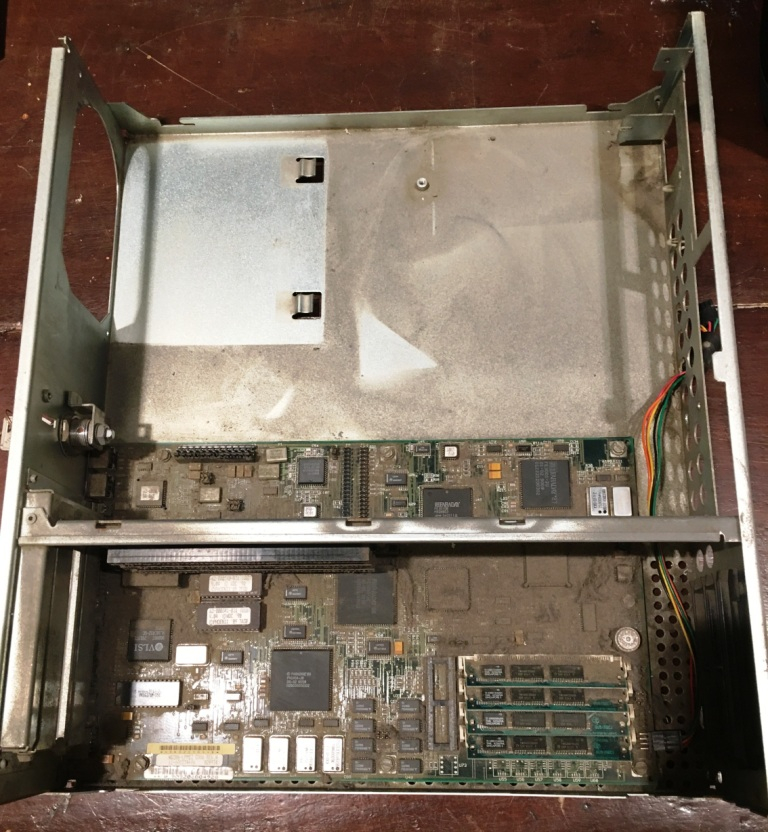
Motherboard removed and dusted a bit:
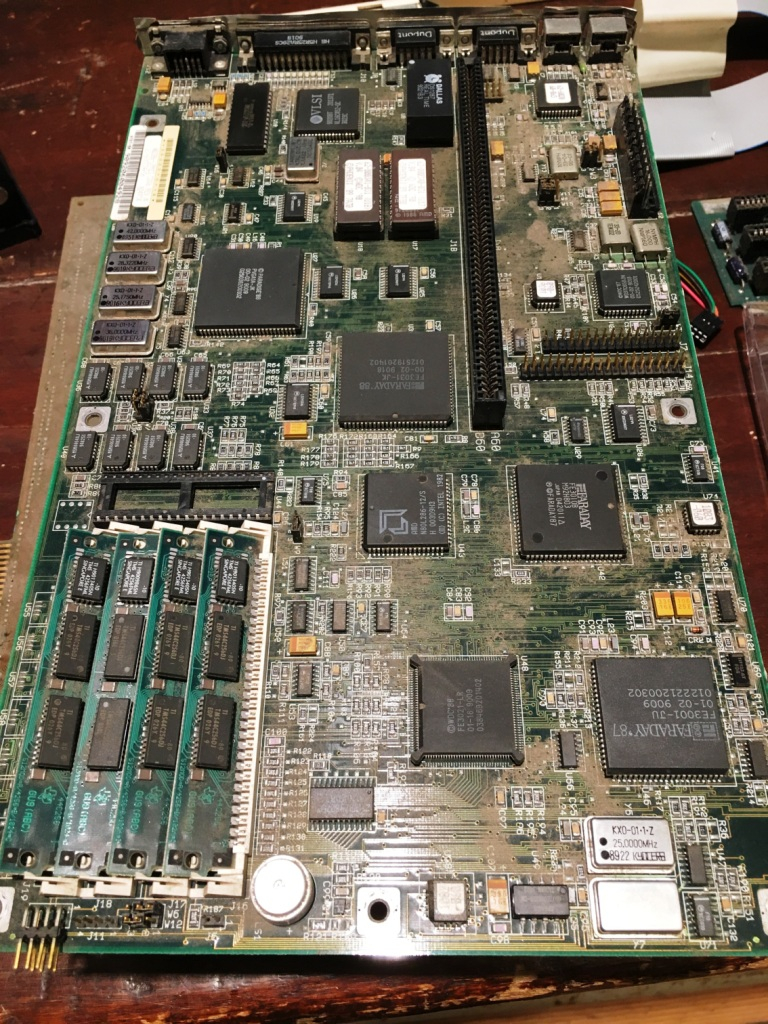
It's a Western Digital WD286-LPM12 board. Integrated IDE Controller, Paradise Video, PS/2 keyboard & mouse headers:
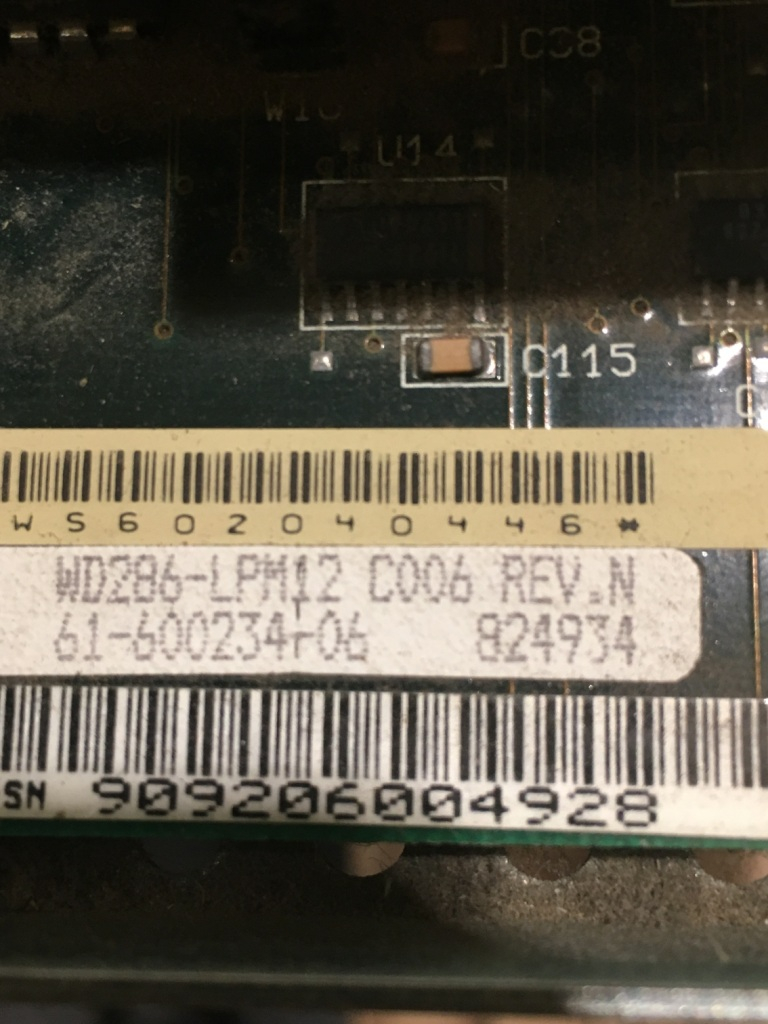
Phoenix BIOS chips, dated 1990:

The glorious 12.5Mhz 286 CPU, an AMD N8OL286-12/S, unfortunately soldered to the board:

4 x 30-pin 80ns 256k SIMMs with Parity, by Texas Instruments (TM256GU9B). I installed the fourth removed SIMM and it's registering fine. Have not run any memory tests yet:
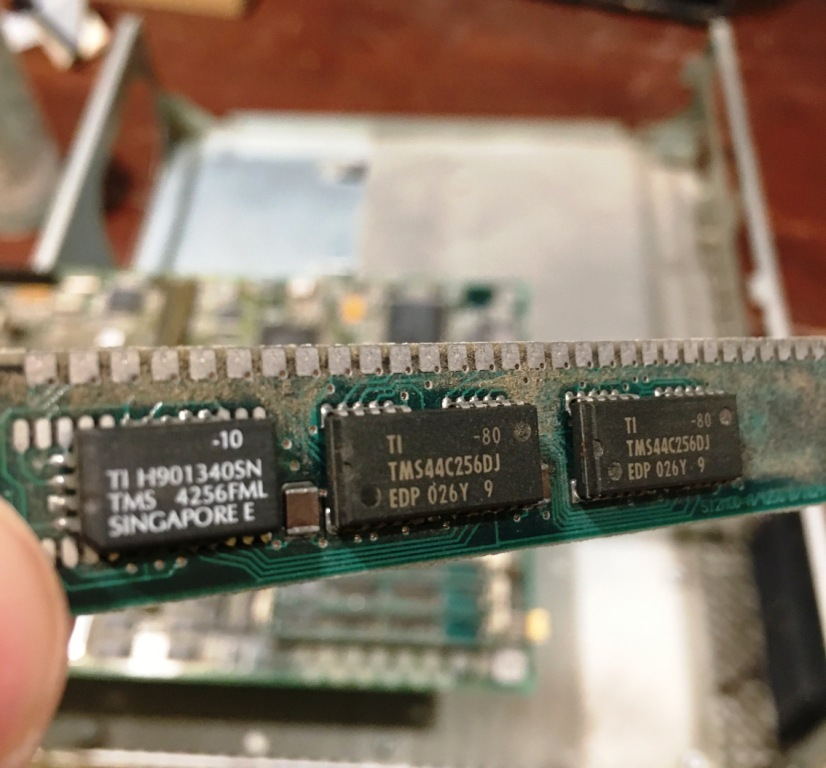
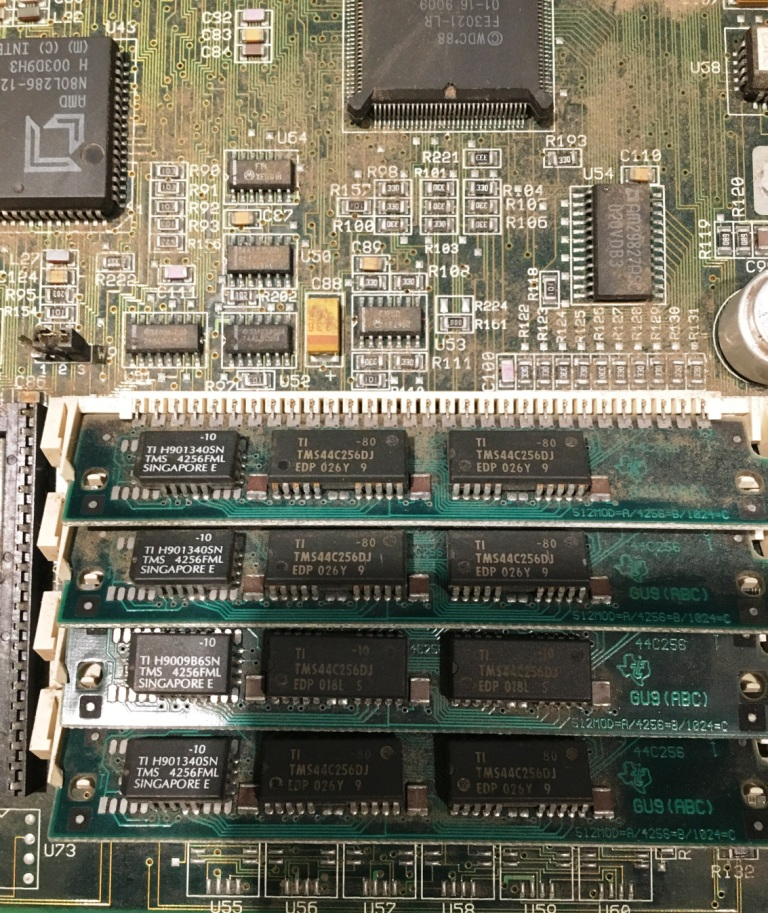
3270 Terminal Emulator Card, a DCA IRMA 005026:

Quantum ProDrive 40MB IDE HDD:
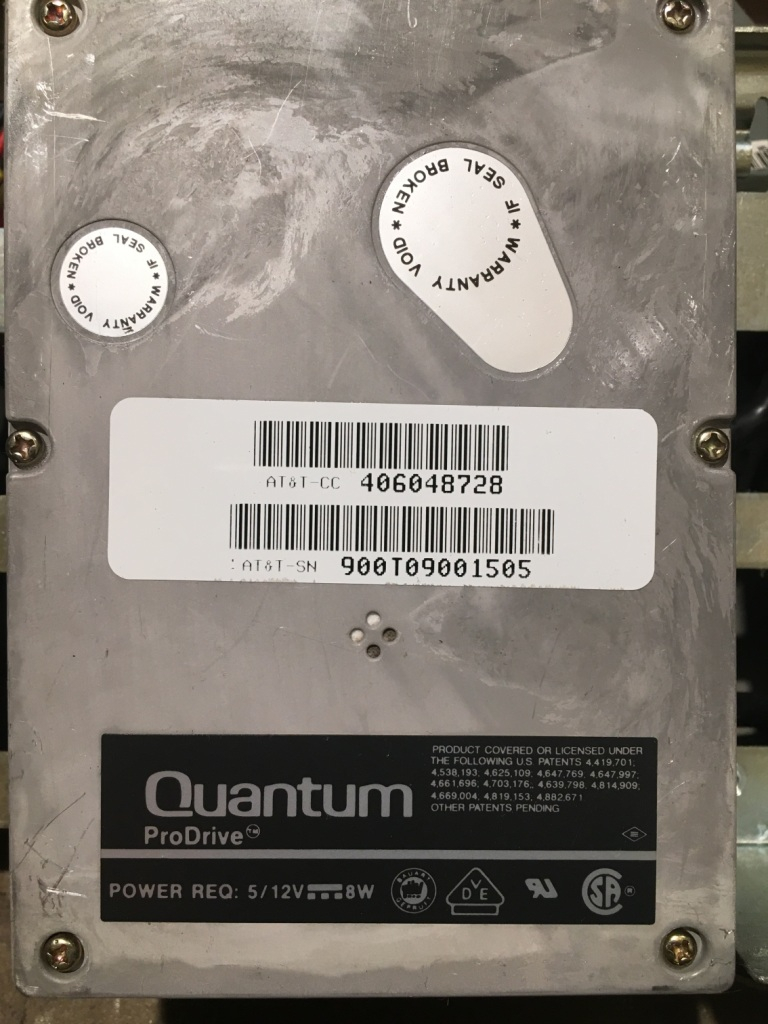
So I had it down to the bare chassis. Cleaned everything pretty well, and then blew out the PSU with some duster spray, and reassembled. Plugged it in and turned it on. Soft, fast-paced, rhythmic beeping from the PC speaker, the power LED blinking. It would do this in 2-3 second cycles. No video output, no drive power... I opened up the PSU. No bulging caps, nothing out of the ordinary. I think that first startup in 25 years did it in...
I rigged up a hack temporary solution to get the machine to power up and it worked quite nicely:
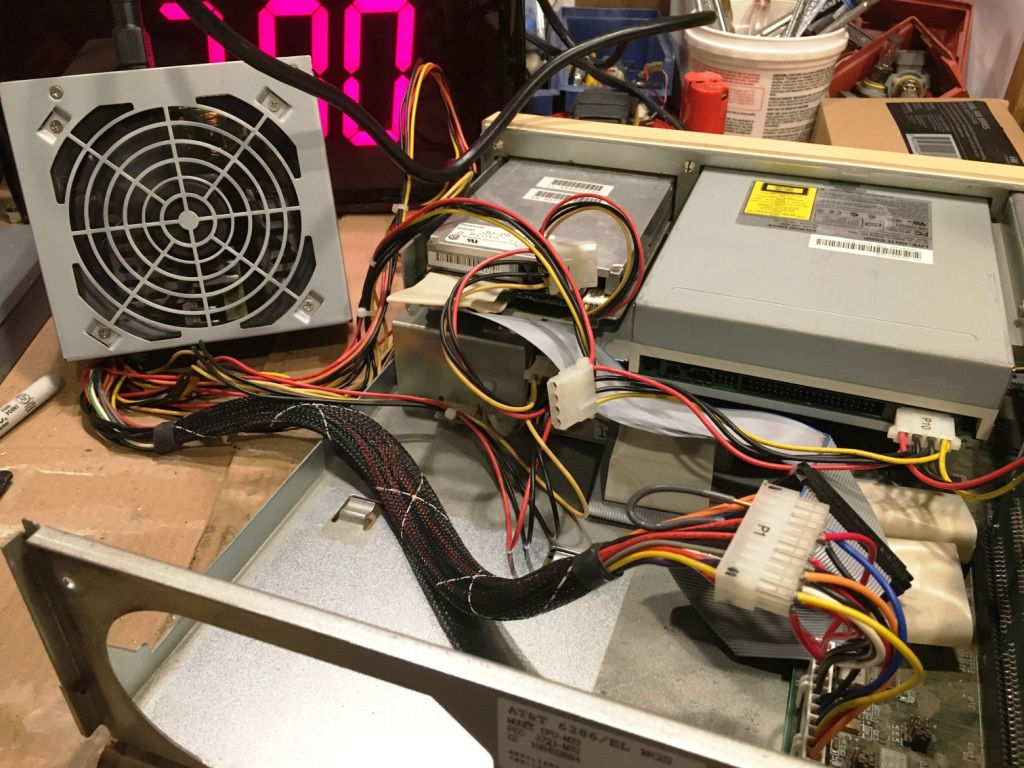
I am looking for a replacement LPX PSU. The bottom right mounting hole is not in the standard location, and the case has clips to secure the PSU, so I may be looking for a used identical model:
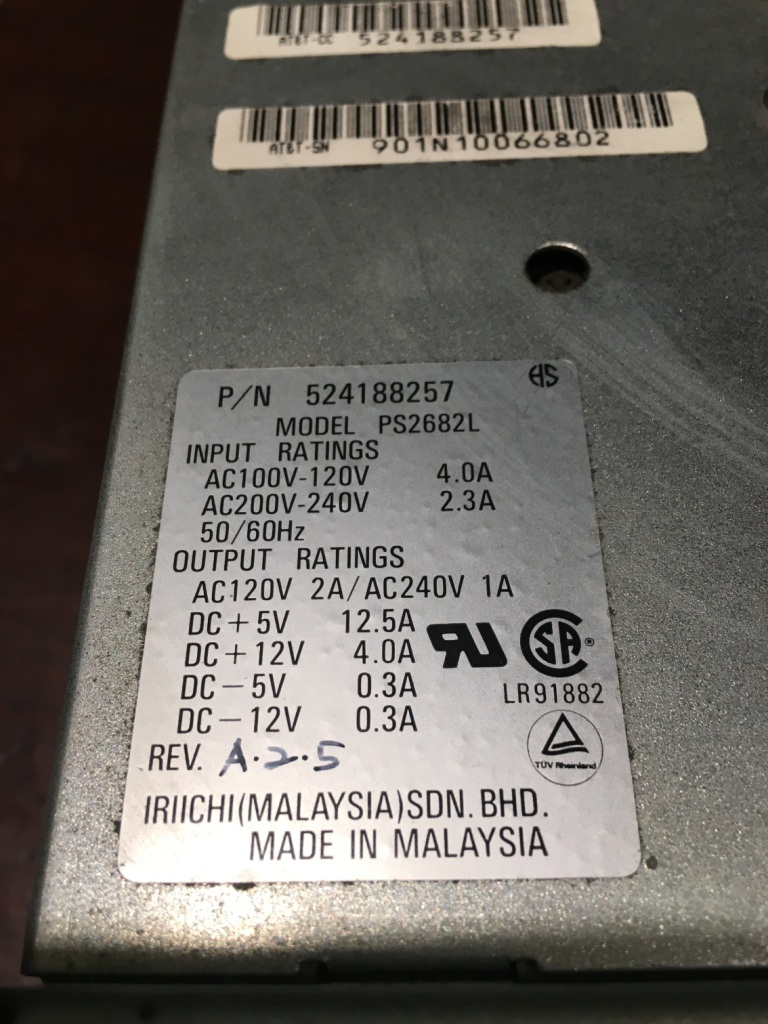
Back to the testing! Here's the machine POSTing:
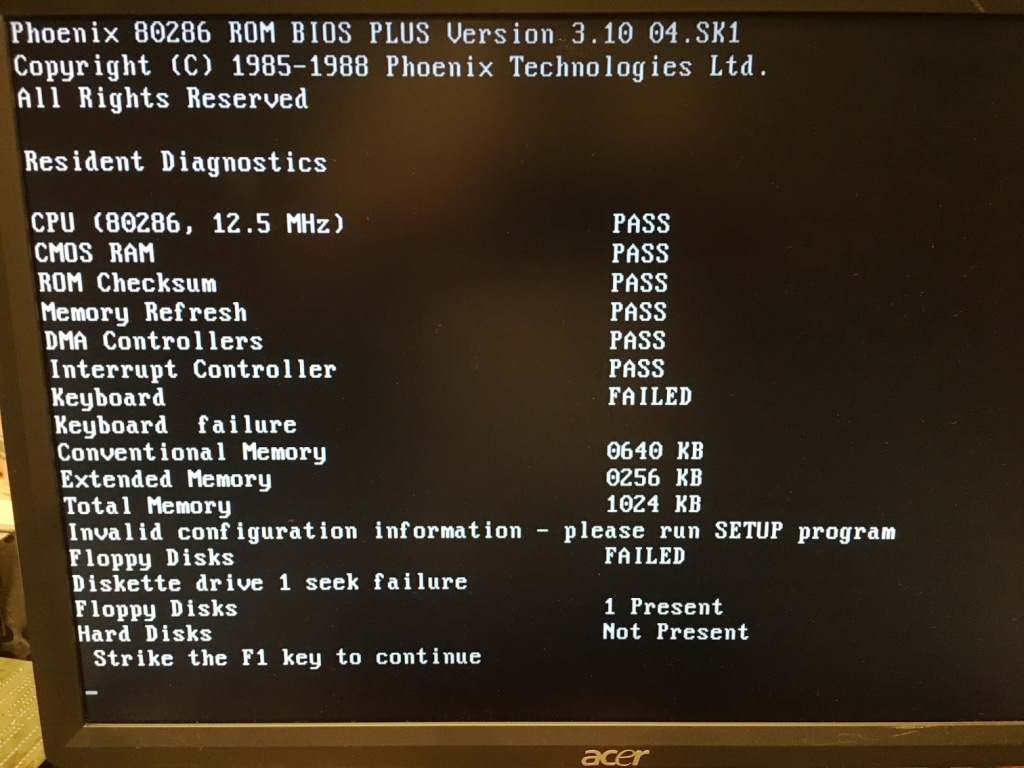
I was quite certain this BIOS would require a floppy to access the SETUP program, but sure enough, it's built in. Ctrl + Alt + Insert accessed it.
Speaking of keys, here's what I found along with the machine. An AT&T branded Keytronics Professional KB3270 Keyboard with DIN to PS2 adapter. Missing one key as shown:

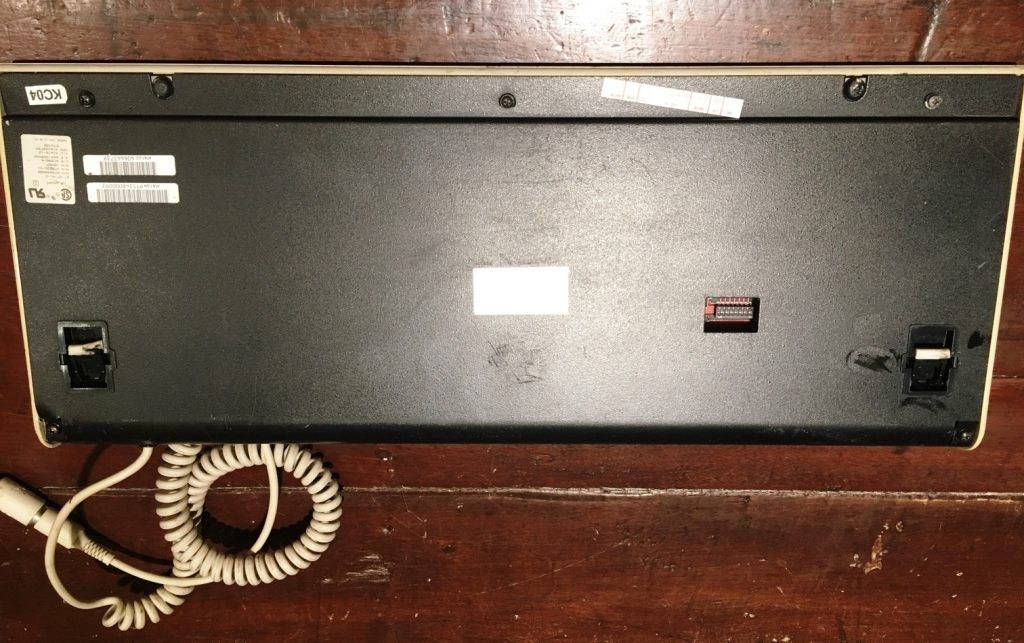
The BIOS is complaining about the RTC losing power. Any suggestions on battery replacement for this board? Until then, every boot means accessing the BIOS SETUP first to set the HDD type.
I did a full PKZIP backup of the hard drive contents and intended on using it, but it since has failed the "initilization" during POST, so I've installed a more modern 4.3GB Seagate Medalist IDE drive, limited by the 504MB BIOS limit, which is just fine with me.
-Nick

Comments
More progress on the machine!
I had to deal with the defective Dallas RTC chip right away. Luckily, WD decided to provide a socket rather than soldering directly to the board. This made my modifications rather easy. I gained access to the chip's battery contacts, and soldered a battery I had laying around, from an IBM ThinkPad. It worked like a charm:
I have ordered a replacement identical Iriichi PS2682L PSU, and that'll be coming in a few days.
I've installed DOS 6.22 and booted the machine successfully with the newer (and much quieter) Medalist, and installed the Future Domain SCSI drivers, and MSCDEX for the Sony CD-ROM. I had quite a battle getting the drive to fit into the 5.25" opening in the front bezel of the case. Are 5.25" floppy drives--what this slot was actually meant for, no doubt--a tiny bit smaller? All three of the others, and a newer 52x drive are the same dimensions... Here's you can see the FD card and drives:
I love these older Sony drives for their nostalgia, but they are VERY sensitive to temperature. Normally the drives only recognize the CDs after they've "warmed up" a bit, and rather unreliably at that. These are some of the first-generation Sony CD-ROM drives though, so I get it.
As an aside, I found this magazine article about this very machine:
I have removed the terminal emulator card. My next steps are to find some 1MB SIMMs as well as a proper sound card. I'll also be doing the "Retr0bright" procedure to the case and drive bezels, and perhaps the keyboard to get them back to white.
Speaking of the keyboard, I will have to investigate the DIP switch settings underneath once I find some information on it.
-Nick
So I realized I threw out all my PS/2 mice, instead of saving one for uses like this... Well that gave me a pretty good excuse to buy this bad boy... Not bad for $12.50 including shipping:
I've also done some research on these Sony drives, and disc recognition errors are apparently very common, and caused by bad capacitors on the drive's PCB. Apple and NeXT rebranded these for their machines. Here are some links about the bad caps:
asterontech.com/Asterontech/next_cdrom_refurb.html
llamamusic.com/s50s550/AppleCD_150_Repair.html
They're on their way from Mouser!
Nice showcase of an old system. My oldest machine is a 386, I should give my old systems another once-over and see how they're holding up, been a few years.
Any thoughts on retrobrighting? I wonder how effective it would even be on that mouse ball...
Wingzero!
I will definitely be retr0brighting this system. It would be silly not to at this point. I suppose you could consider it a restoration. I’m wondering about that mouse ball too, I’m sure sure how well it will hold up. Maybe a lighter application at first to see?
I’ll do the Sony drive bezel as well. I am having a fitment issue though. It appears a 5.25” CD-ROM is just a fraction of an inch too wide for the front panel opening. I had to shave off a small amount of plastic on the front cover before the drive would fit in, and with quite a bit of hassle. The top of the drive bezel was bowing out slightly because of the tightness...
Are 5.25” floppy drives (what this machine was designed for) ever-so-slightly smaller?
-Nick
I've run in to drives that didn't fit exactly. Sometimes they were meant to be installed recessed - not too uncommon on full sized AT desktop cases. But sometimes it was just the result of OEMs sizing things for their own equipment.
Thanks SomeGuy! I’m glad it wasn’t just me losing my mind or something. It’ll fit, just needs a little more tweaking.
Ordered my 4MB (4 x 1MB) 70ns 3-chip parity SIMMs, so those will be installed soon.
Caps for the CD-ROM and the PSU come in tomorrow so I’ll have a project lined up for the weekend!
-Nick
That's one good looking computer. Does it have VGA, CGA, or EGA?
Thank you! Can’t wait to do the whitening procedure on the plastic! And it’s VGA. There’s integrated Paradise VGA graphics onboard.
This is one of the newer 286s around, and has standard PS/2 ports for both Keyboard and Mouse, and has onboard IDE.
I’ll try to get more shots of the case and ports.
-Nick
Cool. In my old 486, my dad installed an S3 Bahamas Paradise 64 VLB video card that had 2MB of video RAM. I wish I can install a 3DFX card in my Packard Bell, but, it's ISA only, sadly.
I'm thinking about getting an SVGA card for this machine. Would an ATI Mach8 be an appropriate choice for this machine? It's around the same time period, and is 16-bit ISA. Apparently the card has two separate video controllers, one which runs the VGA core with it's separate 512k of VRAM under DOS, and the Mach8 core, with 1MB, which is activated when using the Windows 3x driver.
Sound card too... SoundBlaster Pro/Pro 2.0 or a SB16?
Any ideas?
-Nick
Replacement PSU is installed, exactly the same as the original, just working! If you look closely, you'll notice that this is not a typical LPX style PSU, in that the lower right mounting screw hole is not under the input plug, but in the corner of the PSU case...
I've also revived the 1992 Sony SCSI CD-ROM by replacing the electrolytic capacitors!
Here's the PCB flipped for testing after the repair:
And here's the proof!
And the drive back in it's condom, ready for installation:
Good job!
I'm going to build an indoor retrobrighting box soon, and will probably inspect my collection for leaking caps/dead cmos batteries.
Replacing the caps brought that CD drive back to life? Wow. Awesome work. Those were the round surface mounted caps? I'm going to have to learn how to remove and solder those.
Over the years I have had all kinds of CD drives go flaky and crap out. They just don't last very long around me. I can't help but wonder now if any were just crappy capacitors.
I've watched a bunch of videos on youtube from people like AkBKukU and Adrian Black, they both do lots of restoration videos involving recapping stuff, lots of tips and techniques in there.
I’m equally as shocked! I was almost 100% certain it was the laser units, so I was trying to swap the board between the physical drives, but they all seemed to do it. I was worried I had a stack of defective drives, and that they were just prone to failure... The issue is that I only have one SCSI board, the rest of the drives are Sony Bus (40 pin, pre-IDE, proprietary) and I don’t have any old sound cards, let alone one with a Sony-bus header to test them out, so I assumed they all had faulty mechanisms after swapping boards. I had no idea the board was the problem!
Add to that the fact that the caps all looked just fine! No bulging, no visible leaking, nothing at all. To be honest, I really couldn’t believe it was fixed after soldering everything up. Thank god for the lighted magnifyer on my workbench and tiny soldering iron.
Here are some links describing the issue:
asterontech.com/Asterontech/next_cdrom_refurb.html
llamamusic.com/s50s550/AppleCD_150_Repair.html
-Nick
As promised, more pictures of the machine:
I’ve ordered a SB-compatible sound card, an Aztech with modem and game port. From my reading it’s a very good clone of a SB Pro 2.0, for much less $.
I also ordered a SMC EtherCard Elite just for the sake of filling a slot bay. I may try out some light networking if I get bored.
Now I’m looking for an SVGA graphics card to replace the Paradise ‘88 onboard VGA. Maybe something with a MB of VRAM.
-Nick
https://www.ebay.com/itm/STB-HORIZON-1-2-CIRRUS-LOGIC-GD5429-1X0-0318-007-ISA-VGA-VIDEO-GRAPHICS-CARD/382727071351?epid=709895549&hash=item591c4fa677:g:62AAAOSwI01cOjNs:rk:1:pf:1&frcectupt=true
a better VGA card maybe SVGA
Thanks! I got the memory in yesterday. Four 1MB SIMMS of 70ns 30-pin 3-chip parity RAM. It was a matching set, Oki brand.
I installed it, and the POST Extended Memory test failed, giving an error "Memory write/read failure at 1A5596, read E1E5, expecting E5E5. Decreasing available memory."
I would occasionally be able to boot with the BIOS recognizing all 4MB, but once I started Windows, it would freeze or throw the "Memory parity interrupt at 1C5B:0190" halt error.
Luckily, I was able to throw it into my Macintosh SE, so that's now maxed out at 4MB. No waste.
I've ordered a different set of 4, this time 80ns parity SIMMs like the original TI ones. We'll see!
The network card came in, and I installed WFW 3.1, so I'll be tinkering with that...
-Nick
Well i was looking around then i came across this bad boy! Creative Labs Sound Blaster ISA sound card CT4500 and i though of your 286 so here you go https://www.ebay.com/itm/Creative-Labs-Sound-Blaster-ISA-sound-card-CT4500/163483835979?epid=77220453&hash=item2610655e4b:g:-LoAAOSwlxxbw3sP
Thanks! Those are some nice cards. People are snatching them up quick!
I'm still waiting for working memory to come in. I did check out a local Apple shop nearby. I gave him a call and asked if he had any 30-pin SIMMs. He said "Heck Yeah!." None of it was tested or labeled, though... Just a large clear bin of RAM. I did grab a dozen sticks, and I was able to get some to work. There were 2x 4MB labeled SIMMs, both were recognized as 1MB, and I added 2 of my original 256k SIMMs, for a total now of 2.5MB RAM.
I'm hoping to max it out at 4MB, and if this next set of memory from eBay comes in non-compatible, I think I might just bring my 286 to the Mac shop, with an LCD, and go through the bin until I can come up with 4MB that's compatible. Trial and error...
I also get the sound card in tomorrow!
I've been fooling around with DR DOS as well. Still figuring out with DOS to go with. DR DOS 5 or 6 or MS-DOS 5...
-Nick